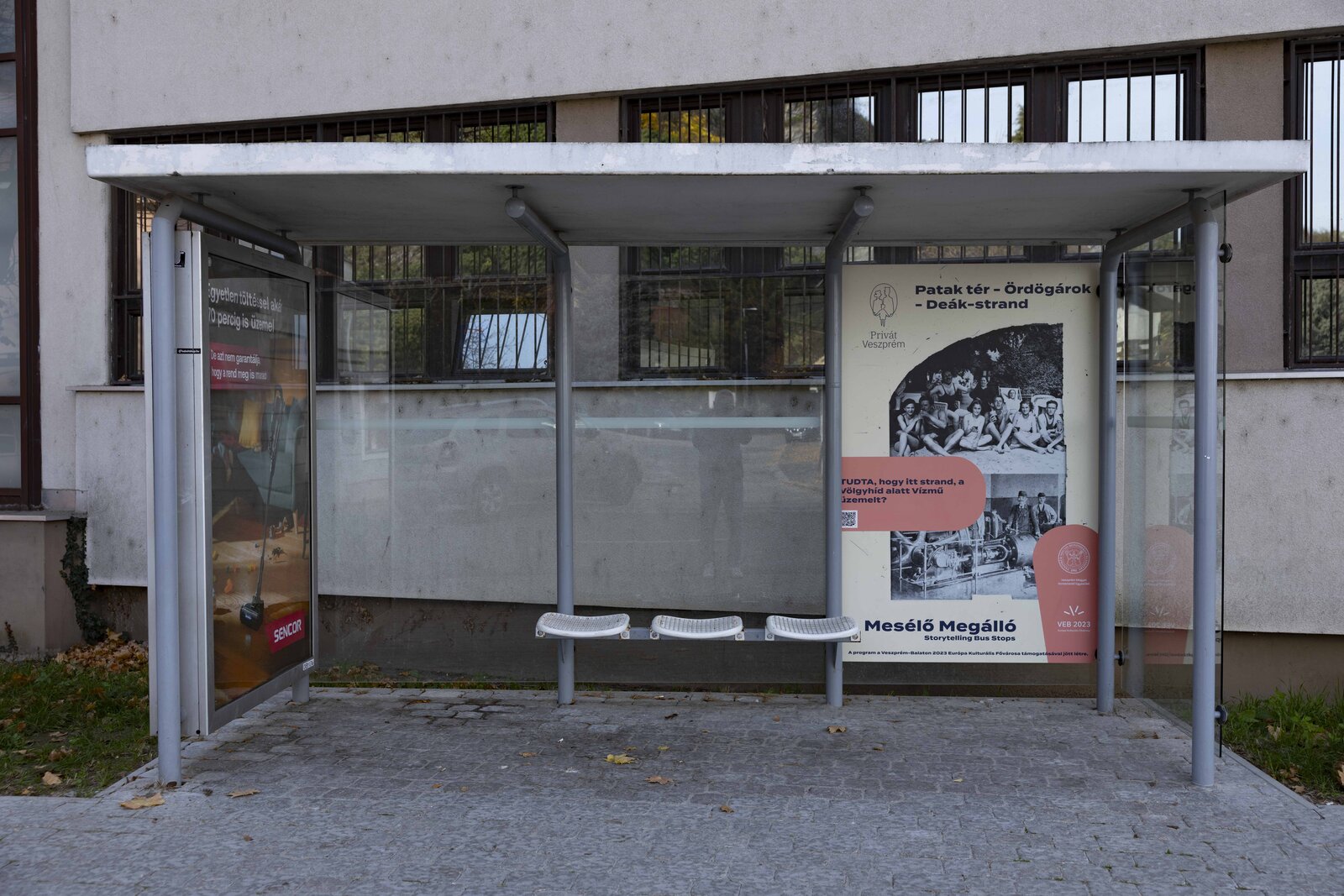Storytelling Bus Stops: Patak Square


The lowest point of Hosszú (Long) Street, present-day Jókai Street serves as the intake point for life-giving water, the origin of Veszprém's water cycle. Here, under the bridge, the rainwater from Ördögárok (Devil's Ravine) flows into the Séd stream. From this point, collecting the water from the Fejesvölgy springs beneath the Valley Bridge, the Water House (Municipal Waterworks) supplied drinking water to the city's residents, and the city's first baths operated here, including the later successor, Deák Strand. In the widening area next to the Séd stream at Patak Square, where a gravel car park is now located, a popular 'swimming pool' or beach operated from 1919. The bathing place, known to the people of Veszprém as Deák Strand, was purchased by Ferenc Deák, a carpenter and merchant, who developed it on his own property on the Jókai Street side of the Séd (45 Jókai St). In the garden of their family home, they built a swimming pool suitable for swimming, measuring 33 metres, and a smaller paddling pool for children, drawing water from the Séd through a filter. Many people frequented this simple and affordable bath, appreciating its shady, floral surroundings and family-friendly atmosphere. After the family head's death, his wife, Etelka Tatay, and then their son István managed the beach, which ultimately ceased operations in the 1950s. The pools were filled in, the property was expropriated by the military, and the family moved to Kiskőrösi Street.

